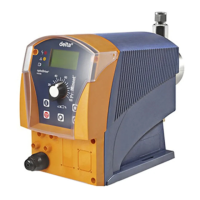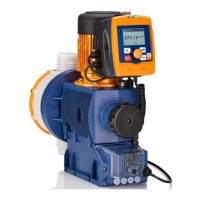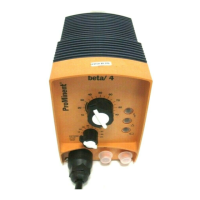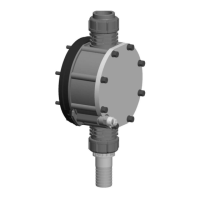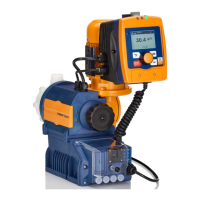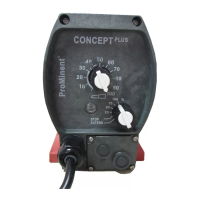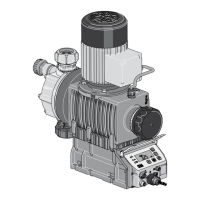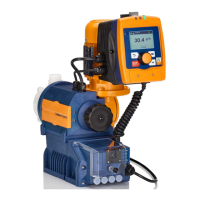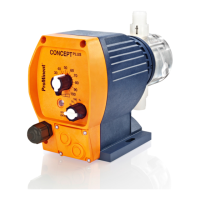The example is intended to provide the programmer with a couple of
“programming obstacles” that he might not immediately see:
Com‐
mand
Time event Additional param‐
eter
Action Additional param‐
eter
Comment
01 Config I/O 1 Input, reacts when
closing
Start Delayer 1 When a contact
closes between
pins 1 and 4 at
“Config I/O” con‐
nector, this starts
delayer 1
02 Config I/O 1 Input, reacts when
closing
Start Delayer 2 When a contact
closes between
pins 1 and 4 at
“Config I/O” con‐
nector, this starts
delayer 2
03 Config I/O 1 Input, reacts when
closing
Start Delayer 3 When a contact
closes between
pins 1 and 4
“Config I/O” con‐
nector, this starts
delayer 3
04 Init Stop Pump stops as
soon as the timer
is activated
05 Delayer 1 after 60 sec Close Config I/O 2 Pins 2 and 4 of
the “Config I/O”
connector act like
a normally closed
contact – enabling
you to control a
device
06 Delayer 2 after 120 sec Manual 12,000 l/h and
80% stroke length
Pump runs after
120 s at 12 l/h
07 Delayer 3 after 180 sec Stop Pump stops after
180 s
08 Delayer 3 after 180 sec Open Config I/O 2 Pins 2 and 4 of
the “Config I/O”
connector act like
a normally open
contact – enabling
you to control a
device
Explanations:
n If 1 time event (trigger) is to trigger 3 actions that are to have
delays of different lengths, then you need to start 3 delayers and
not just 1 - see instructions 01 to 03.
n If several actions are to be performed after the same delay time,
then you need to write exactly as many instructions – with the same
time event (instructions 07 and 08).
n If, for example, you are using
‘Delayer 1’
-
‘60 s’
and
‘Delayer 1’
-
‘120 s’
, then the action is never performed after the second (longer
delay time because the delayer has been activated after the
smaller delay time and becomes inactive.
n Without
‘Init’
-
‘Halt’
(instruction 04) it would remain unclear
whether the pump alone runs by
‘Activation’
of the timer.
Example - to avoid errors
Set up /
‘Menu’
71
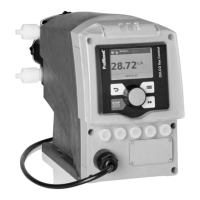
